Hello Everyone
How are you? Hope everyone fine. Todays topic is based on sports. I am a big fan of sports. I have played many types of sports. Kabaddi is one of my favorite sport. So today I decided to post about the history of kabaddi.
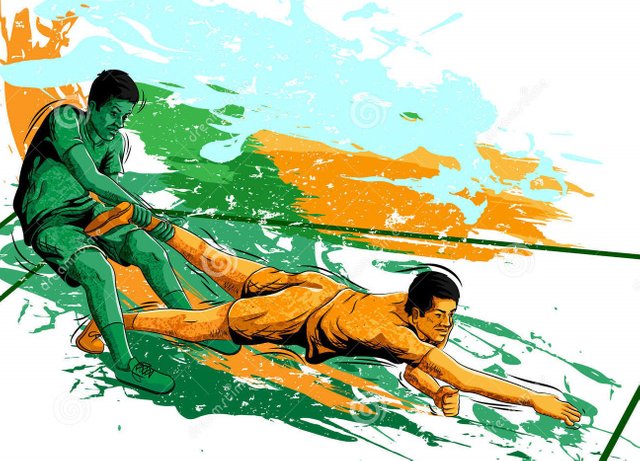
kabaddi
Kabaddi is Asia's own traditional and popular sport. This is an ancient game, especially in the Pak-Indian subcontinent. The game was played under different regional names in this subcontinent. Since it was a regional game, there were no rules and regulations. In the countryside, this ha-du-du game was the only festival of entertainment. In Bangladesh, after gaining independence, various federations were formed to speed up the sport of Bangladesh. His efforts included kabaddi in the 1964 Asian Games in Dhaka. Since then, the game of Kabaddi has entered the international arena. The 1990 Asian Games in Beijing included kabaddi as a regular event. We hope that this game will soon be included in the Commonwealth Games and Olympics.
Kabaddi in Bangladesh
Ha-Du-Du is the the national game of Bangladesh. This is especially true for those who were born and raised in the city, those who have no contact with the village at all. And even if it is seen, it has been for the benefit of television.
Although Ha-Du-Du is a national game, we have not been able to popularize it. Poor ha-du-du is overwhelmed by foreign sports like cricket, football, hockey.
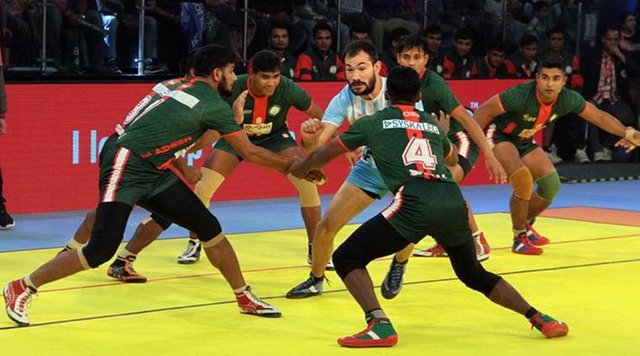
source
Each country has a national game. The national game of the English is cricket, the national game of the Americans is baseball. Our national sport is Hadudu or Kabaddi. But over time, the value of this game has been lost. Even 10 years ago, school-based inter-school or thana kabaddi competitions were organized. At present that is not even visible. Many people do not even know the rules of playing Hadudu.
The history of the origin of the game Kabaddi
Kabaddi is a popular summer sport in Asia. Especially an ancient game of the Indian subcontinent. The game is played under different names based on the region in the subcontinent. There were no statutory rules.
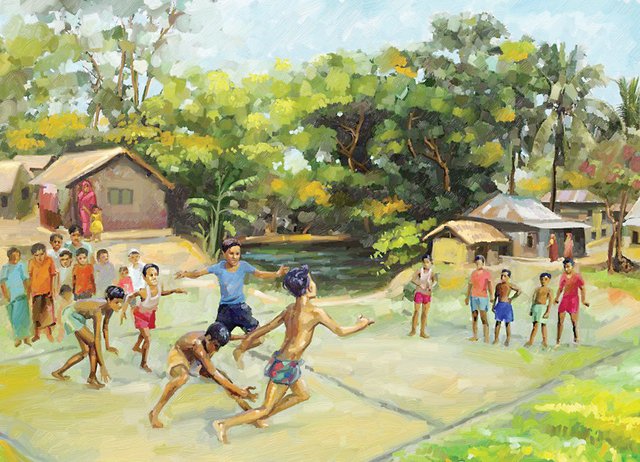
source
The idea is that kabaddi originated in prehistoric times when people learned to hunt individually or in groups to protect themselves in addition to collecting food and to protect themselves from wild animal attacks. Although kabaddi is popular all over South Asia, it originated in Punjab. Another view of the origin of kabaddi is that the game is based on the idea of Abhimanyu's failed attempt to break through the chakras of the Kaurava soldiers as described in the Mahabharata.
Another popular idea about the origin of the game of Kabaddi is that it originated in Tamil . The idea is derived from the playful play of two young boys, although the matter of holding one's breath is added later. In the Tamil region, the game is known as Kabaddi, Sadugudi, Gudugudu, Palinjadugudu and Sadugudathi. The word kabaddi is most likely derived from the Tamil words kai (hand) and pidi (catch). The game was popularly known as Kabaddi in India and Pakistan, Hadudu in Bangladesh, Dudu in Nepal, Gudugudu in Sri Lanka, Thikab in Thailand and Chi Gudu Gudu in Malaysia. The game originated as individuals and groups practiced counter-attack and counter-attack tactics. The prerequisites for success in this game are physical and mental agility, muscle agility, lung strength and endurance, quick thinking and decision making ability and the ability to apply it and above all the ability to understand the opponent's strategy and attitude.
Ha-du-du and kabaddi are the same game?
After reading books, many people get confused, Ha-du-du written in a book. Kabaddi written in a book again. None is wrong.
But there are also subtle differences between ha-du-du and kabaddi. Kabaddi is a slightly refined form of ha-du-du. There are certain rules for playing kabaddi, which apply to the whole of Bangladesh. But ha-du-du is played according to different rules in each region.
Kabaddi from Ha-Du-Du
According to the national encyclopedia Banglapedia, the game Ha-Du-Du was renamed Kabaddi in 1982. At the same time, the game was given the status of a national game. Some rules are finalized for kabaddi.
Ha-Du-Du (Kabaddi) Why is our National Game?
The Pakistanis wanted to attack and suppress us, but the Bengali nation retaliated and got rid of them. Snatched the victory
Political and economic histories
The Indian National Kabaddi Federation of was build in 1950 to introduce the game in a unified manner. In 1953, the federation enacted rules for the game of Kabaddi. After a few years of judicial analysis, some rules were amended and added in 1970. In 1974, the first Kabaddi Test between India and Bangladesh was held in Bangladesh. The Indian Kabaddi team participated in 5 Tests and won 4-1. This competition created huge enthusiasm in Bangladesh. The Bangladesh national kabaddi team went to India in 1989 to play the return Test.
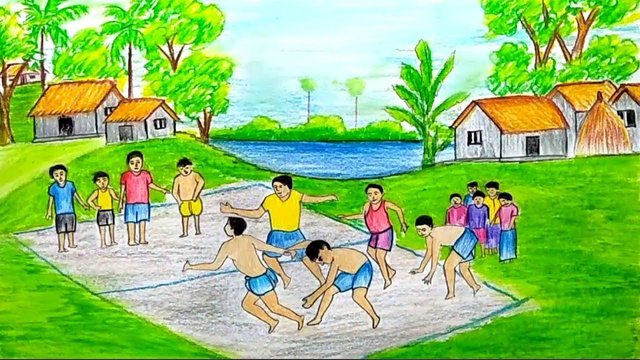
source
197 The meeting was held at the guest house of Villai Steel Mill in Madhya Pradesh, known as the Steel City of India, and was attended by representatives from India, Bangladesh and Nepal. The Asian Kabaddi Federation was formed at that meeting. Based on this, the first Asian Kabaddi Championship was held in 1960 in Calcutta. India, Bangladesh and Nepal participated in this competition. India is the champion and Bangladesh is runners-up.
After gaining independence, various federations were reorganized to give impetus to the sport of Bangladesh. Following this, Bangladesh Kabaddi Federation was formed in 1973. In 1983, the National Kabaddi Championship of India was held in Asansol, West Bengal. Kazi Anisur Rahman and Amir Hamza from Bangladesh went to Asansol to observe the competition. Since then, the rules of Indian kabaddi have been followed. National Kabaddi competition has been held in Bangladesh since 1984. After receiving training in Kabaddi from NIS, India in 1980, Abdul Haq introduced the techniques and rules of Kabaddi in Bangladesh.
Due to the untiring efforts of Bangladesh, the game of Kabaddi was included as a regular event in the SAF Games held in Dhaka in 1975. Since then, the game of Kabaddi has gained a foothold in the international arena. The sport was promoted to international status by including kabaddi in the 1990 Asian Games in Beijing. Since then, kabaddi has been a regular event in the Asian Games. Currently, the game of Kabaddi has become popular in several countries. India, Bangladesh, Pakistan, Sri Lanka, Nepal, Bhutan, Japan, Thailand, Iran, Malaysia and Korea are among them.
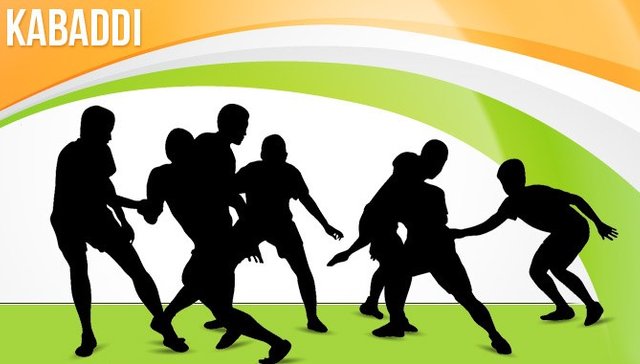
The federations of these countries are continuing their efforts to improve and expand the game of Kabaddi. As a result, the game is becoming popular in countries like Germany, United Kingdom, West Indies, Canada. The Asian Olympic Council has approved the sport as a regular event.The National Kabaddi Federation of India was formed in 1950 to introduce the game in a unified manner. In 1953, the federation enacted rules for the game of Kabaddi. After a few years of judicial analysis, some rules were amended and added in 1970. In 1974, the first Kabaddi Test between India and Bangladesh was held in Bangladesh. The Indian Kabaddi team participated in 5 Tests and won 4-1. This competition created huge enthusiasm in Bangladesh. The Bangladesh national kabaddi team went to India in 1989 to play the return Test.
197 The meeting was held at the guest house of Villai Steel Mill in Madhya Pradesh, known as the Steel City of India, and was attended by representatives from India, Bangladesh and Nepal. The Asian Kabaddi Federation was formed at that meeting. Based on this, the first Asian Kabaddi Championship was held in 1960 in Calcutta. India, Bangladesh and Nepal participated in this competition. India is the champion and Bangladesh is runners-up.
After gaining independence, various federations were reorganized to give impetus to the sport of Bangladesh. Following this, Bangladesh Kabaddi Federation was formed in 1973. In 1983, the National Kabaddi Championship of India was held in Asansol, West Bengal. Kazi Anisur Rahman and Amir Hamza from Bangladesh went to Asansol to observe the competition. Since then, the rules of Indian kabaddi have been followed. National Kabaddi competition has been held in Bangladesh since 1984. After receiving training in Kabaddi from NIS, India in 1980, Abdul Haq introduced the techniques and rules of Kabaddi in Bangladesh.
Due to the untiring efforts of Bangladesh, the game of Kabaddi was included as a regular event in the SAF Games held in Dhaka in 1975. Since then, the game of Kabaddi has gained a foothold in the international arena. The sport was promoted to international status by including kabaddi in the 1990 Asian Games in Beijing. Since then, kabaddi has been a regular event in the Asian Games. Currently, the game of Kabaddi has become popular in several countries. India, Bangladesh, Pakistan, Sri Lanka, Nepal, Bhutan, Japan, Thailand, Iran, Malaysia and Korea are among them.
The federations of these countries are continuing their efforts to improve and expand the game of Kabaddi. As a result, the game is becoming popular in countries like Germany, United Kingdom, West Indies, Canada. The Asian Olympic Council has approved the sport as a regular event.
Field structure
The recognized size of Kabaddi Court is 12.5m by 10m for boys. And 11m by 8m for girls. Each team consists of 6 players and the playing time is Ÿ 20 minutes to 40 minutes per half. 5 minute break in the middle. A referee conducts the game. He was assisted by two umpires. There is one who counts the points.
Rules of the game
The captain of the team that wins the toss will take the raid / court of his choice. The captain of the losing team will take the remaining choice. The court will change in the second half. The team that breathed at the start of the game will start the game with the breath in the second half.
If any part of the player's body touches the ground outside the boundary, he will die. If a player touches the ground outside in a struggle, the player will not die if any part of his body is in contact with the ground inside the boundary.
(A) If a player goes out of bounds during the game, he will be out. The referee / umpire will call his number and immediately take the player off the court. At this time the flute will not be played, the raid will continue.
(B) During the raid, if any anti or antis goes beyond the boundary line or touches the outside land and catches the raider, then the raider will not be out, that anti will be out.The lobby will be considered a playground when the struggle begins. All players who were involved in the struggle during or after the struggle will be able to return to their respective courts using the lobby.
Raider must breathe by pronouncing the authorized word kabaddi. If he does not pronounce Kabaddi properly, the referee / umpire will backback and the opposing team will get a technical point.
Raider must hold his breath before touching the opposing court. If he catches his breath late then the referee / umpire will back him up and give the opposing team a chance to give a technical point and breath.
If the raider enters the opponent's court to breathe even though there is no turn, the referee / umpire will back him and give the opponent a technical point.
The technique of playing kabaddi
There are two types of tactics in the game of Kabaddi-
- defensive tactics, 2) offensive tactics
- Defensive tactics:

source
Anti-rider or tactical tactics used by all the players on the court to breathe is called defensive causal. Such as -
A) holding the ankle, b) holding the knee, c) holding the waist, d) holding the wrist, e) holding with the chain etc.
A. Ankle catching:
This technique is used when the raider tries to touch the opponent with his foot. The player on the left should keep the left foot in front while using this technique and hold the right hand under the foot and the right hand on the top of the leaf. The legs should be in front and the hands should be held at the same time. As soon as you hold the ankle, the leg should be raised and pulled towards the chest.
B. Knee gripping:
This technique is used when the rider tries to touch with the foot or when the foot is stationary or the two legs come together during the movement of the foot. If you hold the player on the left or hold the foot and the player on the left, the right foot will move forward. The left hand should be lowered and the right hand should be held over the shoulder.
C. Holding the waist:
This technique is applied when the raider turns his back on the opponent while breathing. In other words, as soon as you give your back, you have to lift your waist with electric speed.
D. Holding the wrist of the hand:
The wrist is held when the raider touches the hand or if the hand is stationary.
E. Catching with chains:
Catching with chains is very effective. Most trainers put more emphasis on catching with chains. This technique is to be applied only when the rider's body leans towards the opposing player while breathing.
- Offensive tactics:

source
The tactics used by Raider to touch an opposing player with his breath are called offensive tactics. For example - touch with feet, touch with deception.
A. Touching with the feet:
When the raider tries to touch the opposing player with his feet with his breath, it is called touching with the feet. Touching with the feet can be done in different ways.
B. Touching with the hand:
When the raider tries to touch the opposing player with his hand with his breath, he is called touching with his hand. It can be touched in different ways by hand - from top to bottom, from bottom to top, from front to side, from side to front etc. Usually the hand with which the attempt is made to kill goes before the foot. You can try to touch the nose, ears, head, shoulders, body or any part of the upper part of the opposing team with your hands.
Touching with deception: When the raider tries to touch with deception by the body, it is called touching with deception. This strategy is very effective. Most raiders try to touch by applying this technique. When deceived, the raider shows a pre-moving posture to one side but unexpectedly changes speed or attack and tries to touch the other side by chasing. The raider who is more adept at cheating can also kill the opponent's players much more.
Bangladesh National kabaddi Team
Bangladesh National Kabaddi Team is the representative team of Bangladesh in the game of International Kabaddi. Kabaddi is the national sport of Bangladesh. Bangladesh Kabaddi team won a bronze medal in the 2006 Asian Games. In 1970, Bangladesh became runners-up in the first Asian Kabaddi Championship. In the next Asian Kabaddi Championship, Bangladesh is runners-up again.
worldcup History
| Year | Winner | Runners-up |
|---|---|---|
| 2004 | India | Iran |
| 2007 | india | iran |
| 2014 | india | Iran |
Asian games
in 1990,Kabaddi included in the Asian Games. From 1990 to 2014, the Indian national team won every men's and women's kabaddi competition at the Asian Games.\in2016, Iran became the first country outside India to win a gold medal in kabaddi, the Indian men's team won a bronze medal, and the Indian women's team won a silver.
Pro Indian kabaddi league
The Pro Kabaddi League was established in 2014. The support of local broadcaster Star Sports in marketing and changing the rules and regulations of the sport and its presentation has made the Indian Premier League of T20 cricket its business model to make it more suitable for television viewers.
Cc.
@steemcurator01 ,
@steemcurator02 ,
@steemitblog
End
Thanks everyone for reading this post.
@steemcurator01 ,
@steemcurator02 ,
@steemitblog
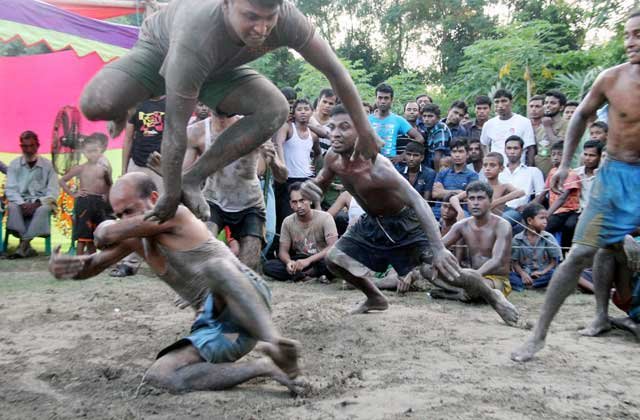
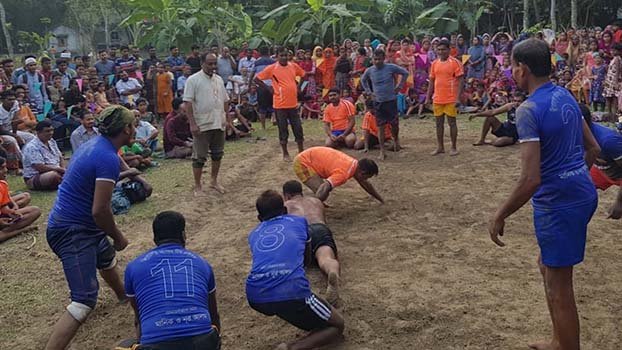
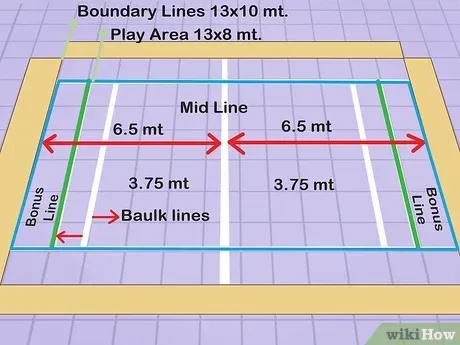
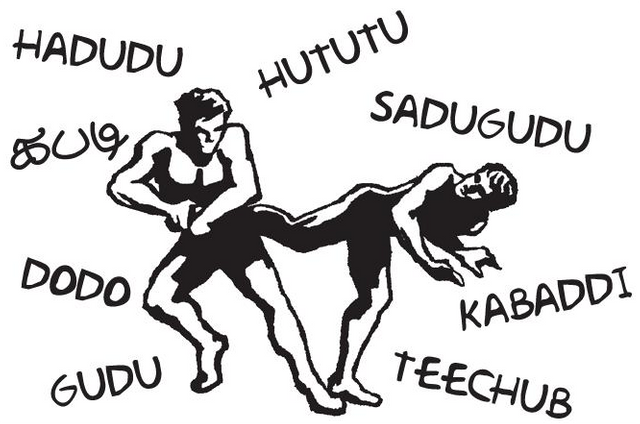
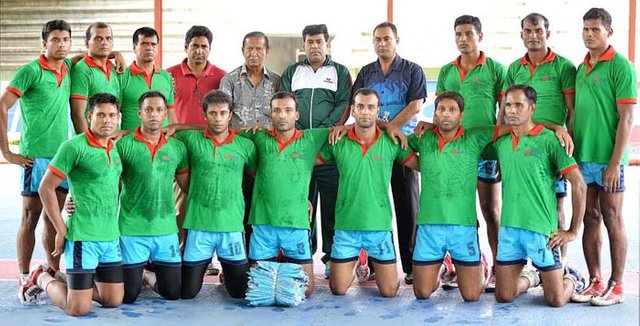
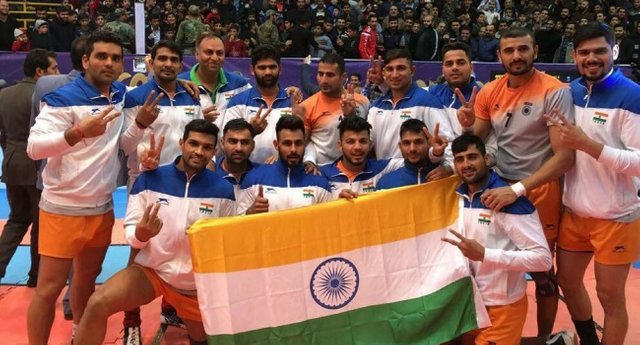
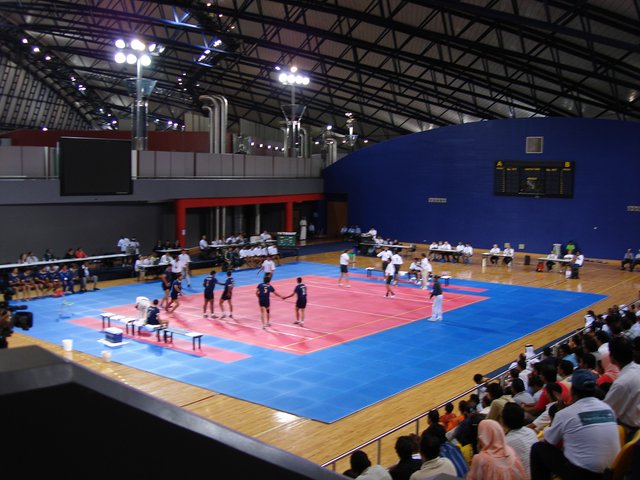

Nice and well described
Downvoting a post can decrease pending rewards and make it less visible. Common reasons:
Submit